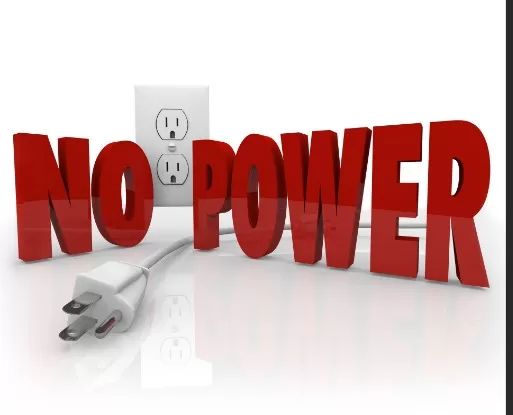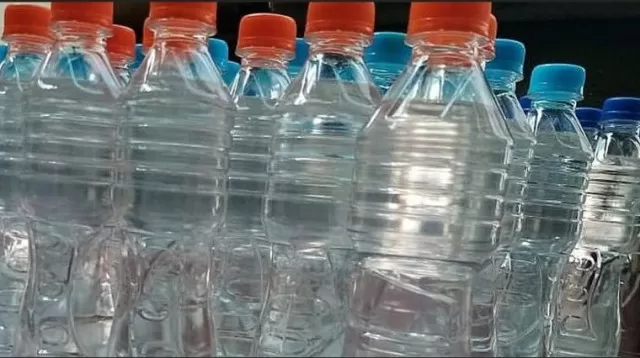Power Outage Predicaments: Problems That Can Arise at Home. When faced with a power outage, it is essential to be prepared for a variety of potential scenarios that can range from minor inconveniences to more critical and potentially life-threatening situations.
By understanding and proactively addressing these what-if scenarios, you can navigate power outages more effectively and ensure the safety and well-being of yourself and your household.By preparing for a wide range of potential challenges, you can minimize the impact of power outages and enhance your ability to cope with these situations effectively. Remember to develop a comprehensive emergency plan, assemble an emergency kit with essential supplies, and stay informed about local emergency protocols and Resources. Being proactive and well-prepared will help you and your household navigate power outages with greater resilience and safety.
Understanding the Causes and Consequences of Power Outages: Unveiling the Reasons Behind Power Loss and Navigating the Aftermath

In our modern society, heavily reliant on technology and interconnected systems, a constant and reliable supply of electricity is crucial for the functioning of various aspects of our daily lives.
However, there are numerous factors that can lead to the loss of power, leaving us in the dark and disconnected from the world around us. While extreme weather conditions, such as storms or hurricanes, along with car accidents and falling trees, have long been recognized as common culprits, other unexpected events like surges in power demand or damage caused by wildlife can also wreak havoc on our electrical grids.
When faced with a power outage, the inconveniences and challenges can be significant, as we find ourselves cut off from essential services, communication channels, and basic amenities.
Hours, or sometimes even longer, without electricity can disrupt our routines, impact our productivity, and compromise our safety. Moreover, when power is eventually restored, a new set of issues can arise, catching us off guard.
Being aware of the major problems that can arise during both power outages and the restoration process is vital.
Equipping ourselves with knowledge and strategies to cope with these situations can make a crucial difference in managing the disruptions effectively. By understanding the causes behind power loss, we can better prepare for potential outages and minimize their impact on our lives.
Additionally, having the necessary skills and resources to navigate the aftermath of power restoration ensures a smoother transition back to normalcy.
In this comprehensive guide, we will delve into the intricacies of power outages and their consequences.
We will explore the diverse array of factors that can lead to power loss, going beyond the commonly recognized causes and shedding light on lesser-known triggers. Furthermore, we will provide practical insights and coping mechanisms to help you mitigate the challenges of living without electricity.
From emergency preparedness to alternative power sources and safeguarding your electronic devices, we will cover a range of strategies to assist you during a power outage.
Moreover, we will examine the potential complications that can arise when the power returns.
Issues such as power surges, equipment damage, and the need to restore functionality in various systems and appliances demand our attention. By understanding these challenges, we can take proactive measures to safeguard our belongings and smoothly reintegrate them into the newly restored power grid.
Ultimately, this comprehensive guide aims to empower you with knowledge and practical tips to navigate power outages and their aftermath.
By unraveling the mysteries of power loss and equipping ourselves with the necessary tools, we can better adapt to these disruptions and maintain a sense of stability even in the face of electricity’s absence.
Surviving the Heat: Coping Strategies for Power Outages and the Absence of Cooling Systems
When a power outage strikes, the loss of electricity not only disrupts our daily routines but also poses significant challenges in maintaining a comfortable living environment.
Particularly during the scorching summer months, the absence of functioning air conditioning systems can lead to a rapid rise in indoor temperatures, putting vulnerable individuals, such as children, pets, and those susceptible to heat-related illnesses, at risk of heat stroke and dehydration.
In the face of a power outage and the unavailability of air conditioning, it becomes crucial to implement alternative strategies to keep yourself, your loved ones, and your pets cool and safe.
While it may seem daunting at first, there are several practical steps you can take to mitigate the effects of the sweltering heat within your home.
One of the primary actions to consider is allowing natural airflow throughout your living space.
Opening doors and windows strategically enables breezes to circulate and creates a refreshing cross-ventilation effect. By carefully positioning and adjusting these openings, you can optimize the airflow, facilitating a cooler and more comfortable atmosphere indoors.
Additionally, utilizing window fans or portable fans can further enhance air circulation and provide localized cooling in specific areas.
Another effective measure involves controlling the amount of sunlight entering your home.
By keeping curtains or shades drawn on the sunny side of your house, you can significantly reduce the amount of heat transmitted through windows. This simple yet impactful step helps in preventing excessive heat buildup and maintains a more temperate indoor environment.
Utilizing reflective window coverings or installing solar films can offer additional protection against solar heat gain.
To counteract the effects of heat on your body, staying properly hydrated is paramount.
Encourage everyone in your household to drink plenty of water to prevent dehydration. In the absence of refrigeration, consider using coolers or ice chests to store perishable items and ensure a supply of chilled water.
It is advisable to have an emergency stash of bottled water or a backup water source readily available during power outages.
In addition to these immediate measures, it is beneficial to have a backup plan in place for long-term power outages.
This can involve exploring alternative cooling options, such as investing in battery-powered fans or portable air conditioning units that can be powered by generators or solar panels. While these solutions may require some initial investment, they can provide significant relief during extended periods without electricity.
By implementing these coping strategies and taking proactive steps to combat the heat, you can navigate power outages without air conditioning more effectively.
Remember to prioritize the safety and well-being of yourself, your family, and your pets, and seek medical attention if any signs of heat-related illnesses or discomfort arise.
In this guide, we will delve further into the challenges posed by power outages in relation to cooling systems.
We will explore a range of practical solutions and strategies to help you endure the heat and maintain a comfortable living environment during extended periods without air conditioning. By equipping yourself with knowledge and preparedness, you can safeguard against the potential risks associated with power loss and keep your home a haven from the summer heat.
Surviving the Cold: Strategies for Enduring Power Outages and Ensuring Adequate Heating

When power outages occur, it’s not just the absence of cooling systems that poses a challenge; the loss of electricity also impacts our ability to heat our homes effectively.
Especially during the chilly winter months, the lack of functioning furnace blowers and electric heaters can lead to plummeting temperatures, causing discomfort and posing potential risks to both our well-being and the integrity of our water pipes.
To navigate power outages and the absence of heating, it becomes crucial to employ alternative methods to keep warm and maintain a habitable indoor environment.
While the situation may seem daunting, there are several practical steps you can take to mitigate the effects of the cold and safeguard your well-being.
One of the most straightforward and effective measures is to bundle up in warm clothing and blankets.
Layering your clothing and using cozy blankets not only helps trap body heat but also provides insulation against the cold. Wearing hats, scarves, and gloves can further enhance your body’s ability to retain warmth.
Encourage everyone in your household to dress appropriately and consider having a supply of extra blankets readily available.
In addition to personal warmth, preventing the freezing of water pipes is crucial.
One way to achieve this is by keeping water flowing through the system. Open water faucets slightly so that they drip steadily.
This continuous flow helps prevent water from stagnating in the pipes, reducing the likelihood of freezing. It’s important to note that this should only be done when there is no water shortage concern or local restrictions in place.
While it may be tempting to seek alternative heating sources during power outages, it’s essential to exercise caution.
Never use barbecues, camping stoves, or kerosene heaters indoors, as they generate carbon monoxide—a colorless, odorless gas that can be extremely dangerous. Carbon monoxide can build up to unsafe levels indoors, leading to unconsciousness or even death.
It is crucial to prioritize your safety by avoiding the use of these devices inside enclosed spaces.
Planning ahead for power outages can also include considering backup heating options.
Investing in alternative heating sources such as propane or wood-burning stoves, or having a generator that can power electric heaters or a furnace blower, can provide a reliable means of staying warm during extended periods without electricity. However, proper installation, ventilation, and adherence to safety guidelines are essential when utilizing these alternative heating methods.
In this comprehensive guide, we will delve further into the challenges posed by power outages in relation to heating systems.
We will explore a range of practical solutions and strategies to help you endure the cold and maintain a warm living environment during extended periods without electricity. By equipping yourself with knowledge and preparedness, you can mitigate the risks associated with power loss and ensure your comfort and safety in the face of freezing temperatures.
Remember, your well-being is of utmost importance.
If you experience prolonged exposure to extreme cold or signs of hypothermia, seek medical attention immediately. By implementing these coping strategies and remaining vigilant, you can navigate power outages without heating more effectively, ensuring your well-being and comfort even in the coldest of winters.
Safely Harnessing Alternative Power Sources: Mitigating Risks Associated with Backup Heating and Electricity
When faced with power issues, many individuals turn to alternative sources to ensure essential electrical functions and heating in their homes.
Gas-powered generators, wood-burning stoves, and fireplaces offer viable backup options. However, it is crucial to recognize and address the potential dangers associated with operating these alternative power sources. Proper education and safety measures are essential to mitigate risks and safeguard the well-being of both yourself and your household.
Gas-powered generators, while valuable for providing electricity during power outages, emit a deadly gas called carbon monoxide (CO).
This odorless and colorless gas can build up to dangerous levels when generators are not properly ventilated or are used in enclosed spaces. Carbon monoxide poisoning poses a severe threat, leading to symptoms ranging from dizziness and nausea to unconsciousness and even death.
To ensure your safety when operating a generator, it is imperative to place it outside and away from open windows, vents, and air intakes. Follow the manufacturer’s guidelines meticulously, including proper ventilation and regular maintenance.
Additionally, investing in a battery-powered carbon monoxide detector and placing it near sleeping areas can provide an extra layer of protection.
Wood-burning stoves and fireplaces are cherished sources of warmth, particularly during winter.
However, it’s important to be aware that they produce smoke that contains particulate matter, carbon monoxide, and other pollutants. Inadequate ventilation or improper use of these heating sources can result in the release of harmful substances into your living space, which can pose health risks, especially for individuals with respiratory conditions.
To ensure safe operation, have your chimney inspected and cleaned regularly to maintain proper airflow and minimize the risk of chimney fires. Use only dry, seasoned wood, and follow the manufacturer’s guidelines for operating your wood-burning stove or fireplace.
Additionally, consider installing carbon monoxide detectors and smoke alarms throughout your home for early detection of potential hazards.
Educating yourself and your household members on the safe usage of alternative power sources is paramount.
Take the time to thoroughly read and understand the manufacturer’s instructions and safety guidelines for each specific appliance. Regularly review and reinforce safety protocols with everyone in your household, emphasizing the importance of proper ventilation, maintenance, and fuel storage.
In the case of gas-powered generators, instruct everyone on the signs of carbon monoxide poisoning and establish an emergency plan that includes seeking immediate medical attention if symptoms arise.
By prioritizing safety and adhering to best practices, you can harness the benefits of alternative power sources without compromising your well-being.
In this comprehensive guide, we will delve further into the safe usage of alternative heating and electricity options. We will explore detailed safety guidelines, maintenance practices, and risk mitigation strategies to empower you with the knowledge and preparedness necessary to use generators, stoves, and fireplaces safely.
Remember, a well-informed and cautious approach to utilizing alternative power sources is key to safeguarding your household and enjoying the benefits of backup heating and electricity.
Navigating Water Challenges During Power Outages: Solutions for Well Users and Electric Water Heater Dependence

When a power outage occurs, individuals who rely on a well for their fresh water supply may encounter difficulties, as the pump that brings water into their homes ceases to function.
Additionally, those with electric water heaters will face the inconvenience of having no access to hot water until the power is restored. Understanding these water-related challenges and implementing practical solutions is essential for maintaining your water needs during power outages.
For individuals dependent on well water, it is crucial to plan ahead and ensure an adequate supply of bottled water is readily available.
Stocking up on a large quantity of bottled water can help sustain you and your household until power is restored and the well pump resumes operation. Consider storing enough water to meet the daily needs of your family for an extended period, taking into account drinking, cooking, and hygiene requirements.
In addition to preparing a water supply, exploring alternative sources of water during power outages can be beneficial.
Rainwater collection systems, if available and properly maintained, can serve as a valuable backup. Collecting rainwater in barrels or containers can provide a supplementary water source for non-potable uses, such as flushing toilets or watering plants.
However, it is important to ensure that the collected rainwater is properly filtered or treated for drinking purposes, as it may contain contaminants.
As for those with electric water heaters, the absence of power will result in a lack of hot water until the electrical service is restored.
This can be inconvenient, especially during colder months when warm water is desired for bathing, cleaning, and other household tasks. Understanding this limitation and making necessary adjustments, such as using cold water for essential tasks or conserving hot water when available, can help manage this temporary inconvenience effectively.
It is advisable to prioritize water usage and avoid excessive consumption to extend the available supply until hot water can be restored.
To prepare for such situations, consider investing in alternative water heating options.
Propane or gas-powered water heaters can provide a backup solution, as they are not reliant on electricity for operation. These alternative water heaters can offer continued access to hot water during power outages, ensuring comfort and functionality in your daily routines.
However, proper installation, ventilation, and compliance with safety guidelines are crucial when utilizing these alternative water heating methods.
In this comprehensive guide, we will delve further into the challenges posed by power outages in relation to water supply and heating.
We will explore a range of practical solutions and strategies to help you navigate water-related issues, whether you rely on a well or have an electric water heater. By equipping yourself with knowledge and preparedness, you can mitigate the impact of power outages on your water needs and ensure the well-being of your household during these periods.
Remember to prioritize water conservation and hygiene practices to optimize the available resources until regular water services are restored.
*The information is for reference only.